Lenses and colds, are they compatible? I really want to wear comfortable and familiar lenses even during a cold, but is it possible? What are the dangers of wearing contact lenses if you have a cold? Read the article and find out!
Is it possible to wear contact lenses if you have a cold?
Autumn and spring period for humans the most dangerous in terms of health. Indeed, during these periods of the year the human body is most weakened and, accordingly, is actively exposed to attacks from bacteria and viruses.
Yes, and a common cold has a very unpleasant symptoms that interfere with the normal performance of assigned tasks - weakness, fever, runny nose and cough, sore throat, redness and tearing of the eyes.
 Can I wear contact lenses if I have a cold?
Can I wear contact lenses if I have a cold?
Some people do not attach importance to a cold and consider it a common thing and wear contact lenses, as usual, but is it actually safe for your health?
Colds are especially unpleasant for those who have vision problems and wear contact lenses. During such periods, the eyeball can almost completely lose its protection, which is fraught with the occurrence of inflammatory process, sometimes quite serious.
Wearing lenses may cause additional discomfort. This can be expressed by pain in the eyes, redness, excessive tearing or, conversely, the appearance of “dry eye syndrome”. If a person has a cold, he quickly gets tired, which also negatively affects the condition of the eyes when wearing lenses.
When you have a runny nose, your eyes are also at quite serious risk. Nasal mucus contains a very large number of pathogenic microorganisms, viruses and bacteria.
Through the lacrimal canals they can penetrate the conjunctiva and into the eye itself, causing severe irritation and inflammation. Soft contact lenses are especially dangerous in this regard, since this is an ideal environment for bacteria and viruses to develop. Wearing lenses further adds to the discomfort.
 Most medications that doctors prescribe for colds are prohibited for people with vision problems. This may include dizziness, blurred vision, increased tearing and headaches. When taking certain medications, the cornea of the eye may dry out and the lens may rub against it.
Most medications that doctors prescribe for colds are prohibited for people with vision problems. This may include dizziness, blurred vision, increased tearing and headaches. When taking certain medications, the cornea of the eye may dry out and the lens may rub against it.
As a result, bacteria that were previously contained in the tear fluid can enter the upper layer eyes, causing dangerous and severe inflammation of the cornea.
Therefore, during your illness you should stop wearing lenses.
If working conditions do not allow this, then you can use glasses, but also try to have less contact with the lenses and frames.
If it so happens that you forgot to take off your lenses or were wearing them for quite a long time, you need to take them off and contact an ophthalmologist to assess your condition and prevent eye disease.
Now you know that you can’t wear contact lenses if you have a cold!
How to choose the right contact lenses?
Contact lens is small optical lens shaped like a bowl. It is placed directly on the eyeball itself, which makes it possible to correct vision defects painlessly and almost unnoticed by others. It is made from a material that allows oxygen to pass through.
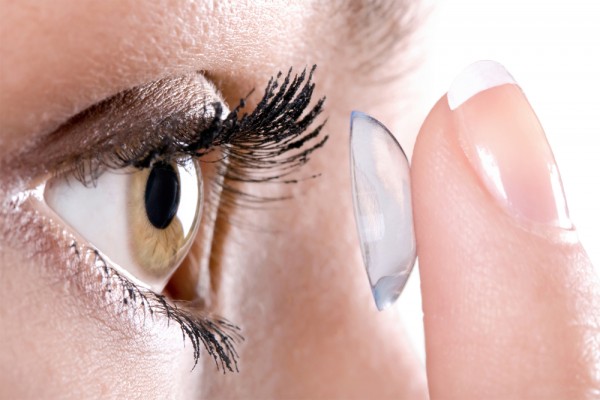 What are the most popular lenses?
What are the most popular lenses?
The most popular are soft lenses. They are divided into “planned replacement” and “traditional” lenses. In this case, it is optimal to purchase “planned replacement” lenses in quantities of several pieces at once and change them 1-2 times a month. The old lenses are simply thrown away. You can wear them for up to 15 hours. If necessary - even a day.
“Traditional” lenses last quite a long time (from 3-6 months to 1 year). You can wear them no more than 10 hours a day and you should not sleep in them. They constantly need special care.
If you can't look after them, optimal choice I will use “planned replacement” lenses.
 Lenses and diseases
Lenses and diseases
For complex diagnoses such as astigmatism, hard lenses are prescribed. Such lenses significantly improve vision even in the dark and have high breathability. Hard lenses are good if you need high visual acuity - for jewelers, shooters, etc.
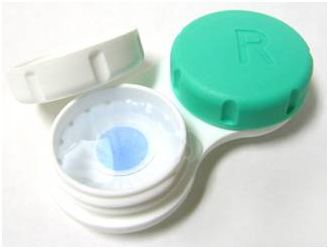 Are there any contraindications?
Are there any contraindications?
Before purchasing contact lenses, you need to find out if there are any contraindications. Lenses should not be worn if you are ill thyroid gland, at diabetes mellitus, infectious diseases of the eyes and lacrimal apparatus, glaucoma, strabismus, keratitis, allergies.
Is it difficult to choose lenses?
Selecting lenses is quite difficult. They must have sufficient mobility so as not to interfere with the tear fluid flowing freely and washing the eyeball. If the lens fits too tightly, the tear will not be able to wash the cornea. Dry eyes will appear. Therefore, lenses need to be selected taking into account the structure and shape of the eye itself.
You can buy lenses only after consulting an ophthalmologist who specializes in contact lenses. He will select them based on your diagnosis. After all, wearing lenses that make your eyes hurt is simply impossible and dangerous.
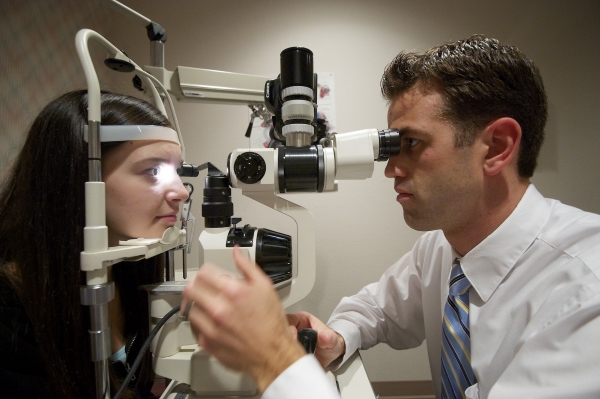 Where is the best place to buy lenses?
Where is the best place to buy lenses?
Contact lenses should only be purchased from opticians. Before use, be sure to read the instructions. On the packaging, the image of the sun indicates that the lens has ultraviolet protection. The expiration date is indicated by the number next to the image. hourglass. We must remember that the expiration date is valid only for sealed lenses. If the package is damaged or opened, then the time recording has already begun.
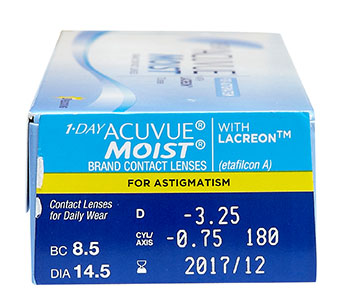 How long can you wear lenses?
How long can you wear lenses?
Under no circumstances should lenses be worn longer than indicated on their packaging. Otherwise, inflammation of the membrane of the eye may occur.
Lenses and computer
For those who have to work at a computer monitor for a long time, it is better to buy lenses that retain moisture and allow oxygen to pass through well.
 Do you know about night lenses?
Do you know about night lenses?
For those who do not want to wear lenses all day, there are special night lenses. They improve vision during sleep up to 100%. But, unfortunately, the effect is very short-lived. For this reason, they need to be used every night. True, they are quite expensive.
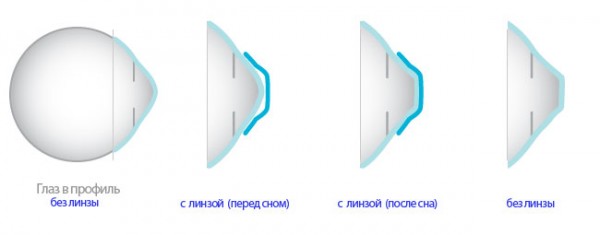 Colored lenses are all the rage!
Colored lenses are all the rage!
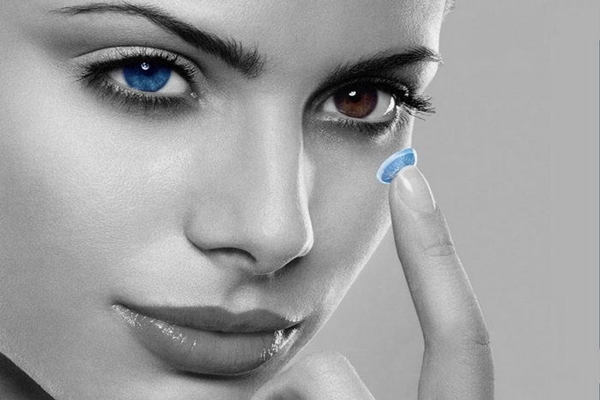 Lenses and sports!
Lenses and sports!
Contact lenses are especially relevant for those who drive active image life.
You must always remember that eye lenses are products for individual use only.

From this video you will learn everything about contact lenses - choice, care, reviews, tips:
Conjunctivitis is inflammation of the conjunctiva of the eye. It can occur due to infection or injury to the eye. At the same time, the eye looks reddened with increased tearing, and even suppuration of the mucous membrane is possible. A person experiences discomfort in the eye, itching and burning. It can be one-sided or two-sided. But is it possible to wear lenses if you have conjunctivitis?
Infection can get to the conjunctiva if personal hygiene rules are not followed, as well as improper care for contact lenses. The eye can be injured if there are stitches after surgery, contact lenses or other foreign object. If the cause of the disease is postoperative sutures, then this problem can be easily solved by removing them.
With timely treatment, this disease goes away quite quickly, within 1-3 weeks. To do this, you need to carefully monitor the condition of your eyes and their mucous membranes and at the slightest changes or unpleasant sensations refuse lenses and seek help from a specialist who can make an accurate diagnosis and prescribe the correct treatment.
However, this disease causes particular inconvenience to people who have vision problems and are accustomed to using contact lenses.
Conjunctivitis is one of the most frequent complications, which occurs when using lenses. If such a complication occurs, you should temporarily replace the lenses with glasses so as not to aggravate the process. In any case, their use in this period time is not only unsafe for health, but also quite inconvenient.
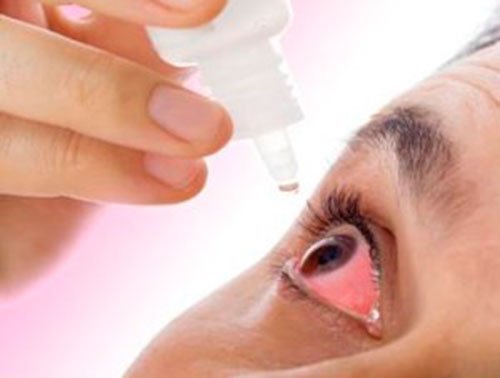
In people who wear contact lenses, conjunctivitis can occur for several reasons:
- Failure to follow the rules for lens care.
- Wear and microdamage of contact lenses.
- An allergic reaction to the material from which the lenses are made, solutions for their treatment.
- Violation of personal hygiene rules when in contact with lenses.
- Weakening of general or local immunity.
During treatment, it is necessary to use medications as prescribed by an ophthalmologist, and observe personal hygiene rules so as not to infect others, since this disease is highly contagious.
Drops and ointments with an antibacterial effect are usually prescribed, in severe cases the use of antibiotics is not local, but general action(tablet drugs). And under no circumstances should you use lenses. Their use during illness can lead to further deterioration of vision.

After conjunctivitis, namely after complete recovery, you can again return to using this method of vision correction. Just need to buy new pair lenses, since old ones are a source of infection. Wearing them will soon lead to a relapse of the disease. It is also necessary to strengthen general immunity with the help of vitamins, walks fresh air and, of course, proper nutrition.
In order to avoid the disease or its relapse, you should follow a number of rules when using lenses:
- Choose solutions for treating lenses without preservatives (a very strong allergen), since they can cause an allergic reaction not only in the form of inflammation of the conjunctiva, but also more severe forms, such as anaphylactic shock or Quincke's edema. Such complications will require urgent health care and possibly even hospitalization, as well as temporary or permanent contact loss.
- Do not use damaged lenses; replace them with new ones immediately.
- Take short breaks from wearing lenses, during which you must use glasses. This will give necessary rest mucous membrane of the eyes.
- The most important thing is to follow the rules for caring for lenses in order to prevent another eye infection.
- Use daily lenses if such a need arises, or if a person is not satisfied with the daily process of processing regular lenses.

Anyone who wears contact lenses needs to know the rules for caring for them:
Daily change of the special solution in which the lenses are kept when the person is not using them;
Be sure to thoroughly wash your hands before using lenses (removing and putting them on);
Each eye should have its own permanent lens, do not confuse them to avoid eye infection;
Do not wear used, contaminated lenses;
Rinse and clean lenses disinfectant solution after each withdrawal;
Girls need to first put on lenses and then start makeup, and before removing makeup, they should first remove them and then start cosmetic procedures;
Strictly observe the expiration dates of products, do not use them after the expiration date.
Video on the topic of the article
Contact lenses - modern remedy helping to eliminate vision problems. Lenses are used for both treatment and cosmetic effects on the eyes. What type of vision can you wear lenses for?
In cosmetology, if good vision, they are used to hide various eye defects (albinism, eyesore, different colors human eye and others), as well as to obtain desired color eyes (colored lenses).
Colored lenses are safe for the eyes and vision. However, you shouldn't get carried away with them. It's all the same foreign body which may cause some discomfort. Such lenses are not suitable for constant wear because they do not allow oxygen to pass through.
They should be worn sporadically and no longer than 4-6 hours at a time. It is necessary to follow all rules of lens care and hygiene to avoid infecting the visual apparatus. Monitor the expiration date and do not use expired products.
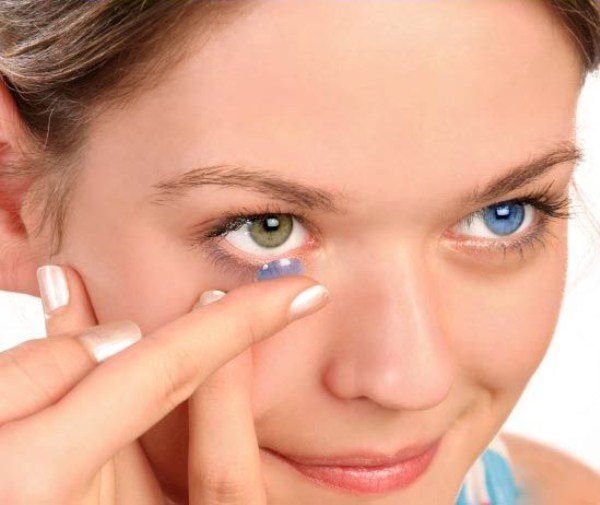
What type of vision can you still wear lenses for? They can be used for both good and poor vision. It just depends on the type of lenses. WITH therapeutic purpose lenses are used for:
Astigmatism;
Myopia (nearsightedness);
Low vision;
Hypermetropia (farsightedness);
Ineffectiveness of correcting visual impairment with glasses.
Their appointment can be carried out according to professional indications, when wearing glasses is impossible or difficult (builders, medical workers, athletes and others). They are absolutely safe, they are prescribed even to children, most often from 10-13 years old, since children younger age may neglect the rules of personal hygiene, resulting in infection in the eyes along with the lenses.
For children under 10 years old, lenses can cause some inconvenience, and, in the end, they may simply forget about them, which is not very good for the treatment process.

Poor vision is not a death sentence. For example, myopia is well corrected with lenses of any degree of complexity. Myopia (minus vision, myopia) is a deterioration in vision in which a person has difficulty seeing objects located in the distance (the image is focused in front of the retina). It can be either congenital or acquired. There are three degrees of myopia: low, medium and high.
Astigmatism (plus vision) is an eye pathology in which the image is incorrectly focused on the retina. At the same time, the person complains about the lack of clarity of the image he sees and the blurred silhouettes. There are weak, medium and high degrees of astigmatism. It can be congenital or acquired.
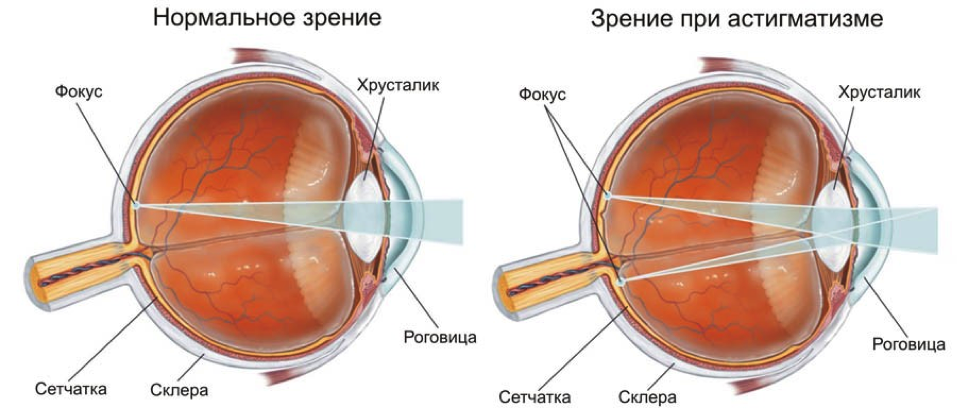
This pathology can be corrected with glasses, contact lenses, and is also possible laser correction vision. Until recently, correction with lenses was very difficult, since there were only hard lenses to solve this problem.
Today, with positive vision, special lenses (toric) are used. Their appearance is different from that of regular contact lenses. These lenses are selected strictly individually for each person. IN in this case correction is possible with weak and moderate degrees.
Farsightedness (hyperopia) is an eye disease in which the image is focused not on the retina, but behind it. Age-related farsightedness after 45 - 50 years is observed in almost everyone, which is associated with anatomical changes. With this disease, a person has difficulty seeing close objects and complains of eye fatigue and headaches.
There are weak, medium and high degree. For farsightedness, lenses are also worn; they are soft and have a healing effect.
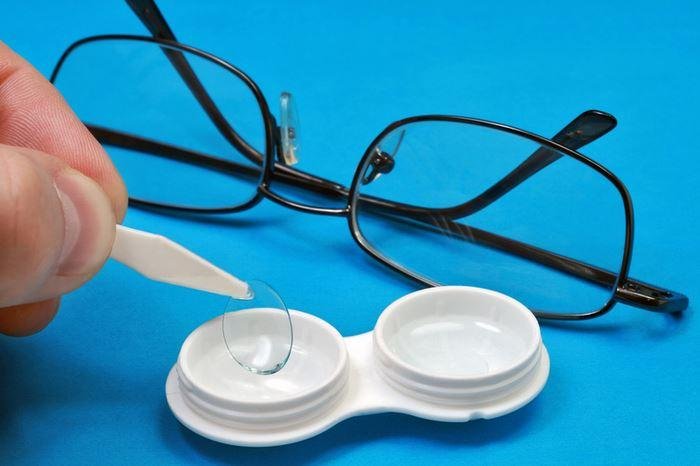
Age-related vision deterioration can also be corrected with the help of contact lenses, for example, multifocal ones (they are divided into 2 zones: far and near).
You should not use lenses if a person has:
There is an allergy to the material from which the lens is made or to solutions for their treatment;
Available inflammatory diseases eyelids (blepharitis) or conjunctiva (conjunctivitis);
Omission upper eyelid(ptosis);
Tuberculosis;
There is dryness of the cornea;
Increased tear production;
Use with caution in diabetes mellitus.
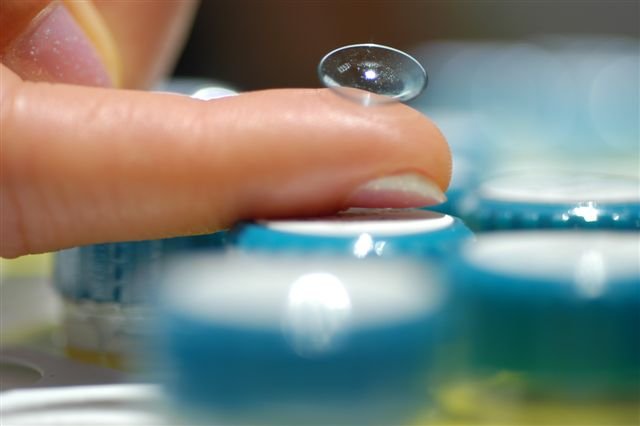
It is necessary to give up contact lenses for a while and switch to vision correction with glasses during colds. During this period, the immune system weakens and the mucous membrane of the eyes dries out. As a result, the use of lenses can lead to eye injury or infection.
Delayed allergies may occur; in this case, you should also stop using lenses, at least, until the symptoms disappear and the cause of its occurrence is determined. You can resume their use only after consulting your doctor. If necessary, you should replace the lenses with similar ones, but made of a different material, or change the disinfectant solutions.
Video on the topic of the article
Today, contact lenses have become very common for people with poor vision. Due to their popularity, their manufacturing technologies began to improve.
Lenses have become an alternative and ideal replacement for glasses. They can cope with problems such as astigmatism.
Lenses are made from the following materials:
- Hydrogel is a very soft material.
- Polymer compounds are rigid materials.
They are quite comfortable and comfortable to wear. But some people, due to poor quality care or lack of hygiene, may experience unpleasant consequences wearing lenses, and they can be quite serious. Therefore, it is recommended to periodically visit an ophthalmologist, clean them properly and not wear them for longer due date.
What are the consequences of wearing lenses for a long time or incorrectly? The consequences can be very different. In this article we will look at the main ones.
Corneal edema
If a small concentration of air enters the cornea when wearing contact lenses, swelling may occur. This arises due to irregular shape lenses or sleeping in them.
Signs of corneal edema:
- Everything around is blurry.
- If you look at a light bulb, a rainbow forms around it.
- The eyes are red.
The consequences of wearing lenses, such as swelling, can be easily eliminated if you immediately consult a doctor. By starting treatment on time, swelling can be relieved within a few days.
Corneal microtraumas
When wearing contact lenses, the cornea experiences stress every day, microtraumas appear on its surface, accompanied by pain symptoms, a feeling of lacrimation and redness of the conjunctiva. To restore the tissues of the ocular surface after injuries, as an auxiliary therapy, products with dexpanthenol can be used - a substance characterized by a regenerative effect on tissue, in particular, it has a healing effect due to the maximum concentration of dexpanthenol 5% *, and the carbomer included in its composition due to its viscous texture, it prolongs the contact of dexpanthenol with the ocular surface. Korneregel remains on the eye for a long time due to its gel-like form, is easy to apply, penetrates into the deep layers of the cornea and stimulates the regeneration process of the epithelium of the superficial tissues of the eye, promotes the healing of microtraumas and eliminates the sensation of pain. The drug is applied in the evening, when the lenses are already removed.
Protein deposits
These consequences of wearing lenses are very popular, but harmless.
Fats, calcium and proteins that are on the tear surface begin to come into contact with the surface of the contact lens. Subsequently, an uneven and rough film appears on it. To the human eye it is almost invisible, you can only pay attention to the greasy structure of the surface. But under a microscope everything is clearly visible.
Thus, these deposits accumulate and cause eye irritation. They begin to itch and turn red. In this case, you need to wear lenses for less time. If nothing is done, an infection may develop, which will lead to more severe consequences.
A multi-purpose solution that contains enzymes can help in this situation. And in order to control the consequences of wearing contact lenses, such as protein deposits, it is recommended to use disposable devices for some time.
In cases where such problems appear very often and in large quantities, it is recommended to use lenses that are made of material using crofilcon A or netrafilcon A. They are most resistant to such complications.
It is worth remembering that such protein deposits can be dangerous to the eyes, as they are potential carriers of germs and infections. In addition, the rough and uneven surface of the lens can scratch and injure the cornea.
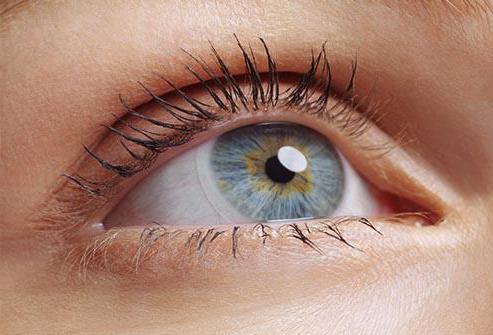
Conjunctivitis
When considering the consequences of wearing contact lenses, conjunctivitis should be mentioned. It forms as a bump on the inner upper part of the eyelid. This happens due to large quantity accumulated lymphocytes, eosinophils. Over time, the tissue begins to thicken and the tubercle begins to increase in size.
The cause of conjunctivitis is considered to be an allergy to accumulated deposits or to the cleaning fluid. This disease is rare in cases where frequent lens replacement occurs.
Signs of capillary conjunctivitis:
- Discharge.
- Irritations.
- Microorganisms.
- Feeling foreign object in the eye.
To cure giant capillary conjunctivitis, you need to wear lenses less often, or better yet, stop wearing them altogether. You can try to choose a different lens option, from a different material and a different shape. In addition, it is worth using medications that will prevent the development of mast cells. And the drops will help get rid of eye pain.
If treatment is carried out correctly, then the signs of the disease quickly disappear, but the tubercles themselves disappear after a few weeks.
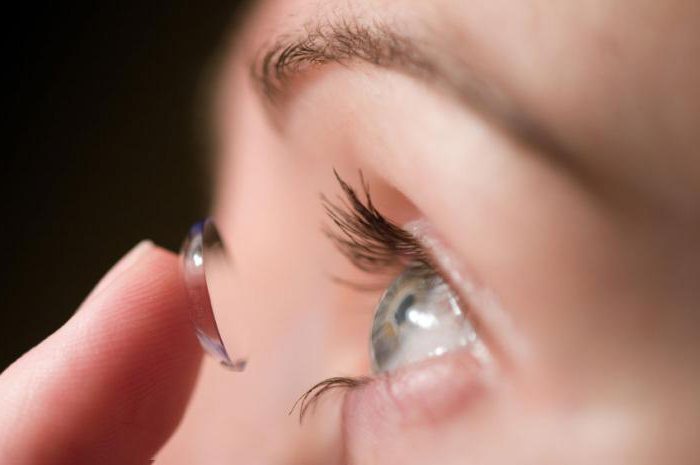
Vessel growths on the cornea
The consequences of wearing lenses, such as the growth of blood vessels on the cornea, can have a very bad effect on a person’s vision. The reason for this is usually the use of soft lenses, which do not allow air oxygen to reach the cornea, and it begins to starve.
Microbial keratitis
There are other unpleasant consequences of wearing contact lenses, in particular microbial keratitis. This is the most serious and dangerous complication. This disease can lead to vision loss.
Despite the fact that the eye independently prevents infection by cleaning its surface for centuries, washing the cornea with tears, obsolete cells dying off and new ones appearing in their place, quite often there are people who suffer from microbial keratitis. Most often these are those who have been there for a month or more. During this time, microorganisms such as staphylococcus and Pseudomonas aeruginosa form on the surface of the eye, which are the cause of the disease.
Signs of the disease:
- Burning in the eyes.
- Fear of light.
- Tears flow periodically.
- Pus is released.
- Vision drops sharply.
- Rapid progression.
The consequences of wearing lenses for more than the prescribed period should be treated as soon as possible, immediately after the first signs appear.
Reasons why microbial keratitis may occur:
- Wearing lenses is very for a long time no breaks.
- Lens replacement occurs very rarely.
- Diabetes mellitus or eye injuries.
- "Dry eye"
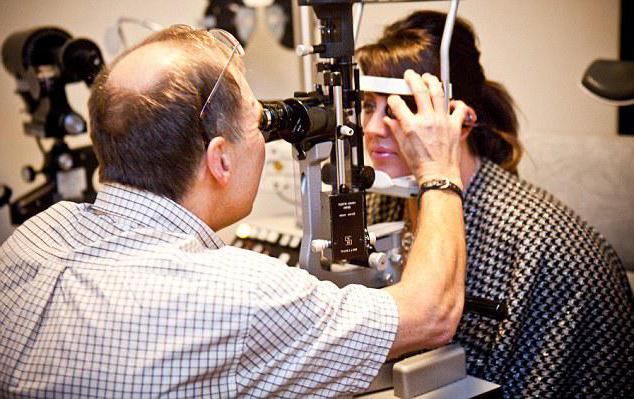
Acanthamoeba keratitis
This disease can be found quite rarely, but it is the most dangerous, since if treatment is not started in time, you can lose not only your vision, but also your eye.
The cause of this disease is Acanthamoeba, which lives and easily moves in soil, water, even drinking water. It can appear on the surface of any type of contact lenses.
Therefore, while wearing lenses, you should not swim in the pool, in ponds, or even in the bath. Also, avoid washing or rinsing lens cases in tap water.
Corneal ulcer
Corneal ulcers should also be discussed when considering the consequences of wearing lenses. longer term and failure to comply with personal hygiene rules. This disease can also occur if the surface of the eye is damaged.
Corneal ulcers can come in two forms:
- Infectious.
- Sterile.
The infectious form is usually accompanied by severe pain, heavy discharge pus, often after an illness a hole remains in the corneal epithelium. The speed of development of an ulcer depends on the type of microorganisms that live on the surface of the eye. Antibiotics will be the most important thing here effective way treatment.
The sterile method proceeds very gently, without the appearance of a hole in the cornea and without pain syndromes.
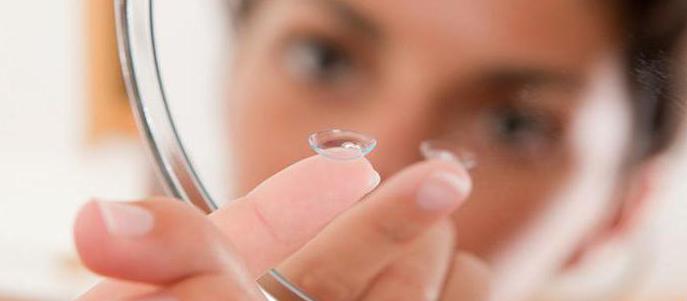
Allergy
Negative consequences of wearing contact lenses can manifest themselves in the form of allergic reaction, which arose from the material from which the lens itself is made, as well as from the components of the solution in which it is processed.
Deposits that form on the surface of the lens can also cause eye allergies. In this case, a transition from allergy to conjunctivitis often occurs.
If you are allergic to the material from which the lenses are made, you should simply replace them with a different type.
The consequences may manifest in the form of allergic conjunctivitis. It is accompanied by itching, lacrimation, fear of light, swelling and general discomfort. In this case, it is necessary to use it in the form of drops, which are injected onto the cornea of the eye before placing the lens in it.
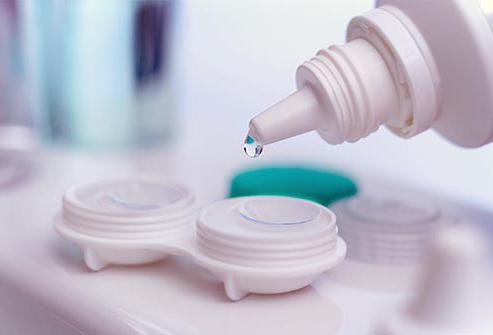
Conjunctival fissures
Several years ago another one was diagnosed negative consequence wearing lenses - conjunctival fissure. This may occur if the lenses are made of silicone hydrogel. Cracks mainly occur in places where the edge of the lens comes into contact with the conjunctiva. Usually this consequence occurs without pain or any symptoms. Presumably main reason such a disease is mechanical damage or eye injury, which more often occurs with constant use of lenses.
Mucin balls
These balls can be found at inner surface contact lens in the form of small round formations. More often, this negative consequence occurs with long-term continuous wearing of lenses made of silicone hydrogel material. This usually goes away without painful sensations And serious consequences, but there are cases when round formations press on the cornea of the eye.
Refractive error
When wearing lenses made of silicone hydrogel material for a long time, refractive error may occur. This occurs in cases where the material is very elastic compared to the surface of the eye. Upon contact, the lens will compress and tighten the cornea at its center. Sometimes the opposite can happen, leading to myopia.
Corneal staining
In rare cases, contact lens wearers may experience staining of the cornea in the form of an arc. Most often it appears due to pressure of the upper eyelid on the lens. Due to the frictional force, an arc of lens displacement begins to form on the cornea.
Endothelial vesicles
Endothelial vesicles are dark-colored parts that appear after lens insertion. The appearance of these bubbles does not indicate pathology, but may be the cause of hypoxia in this part of the cornea.
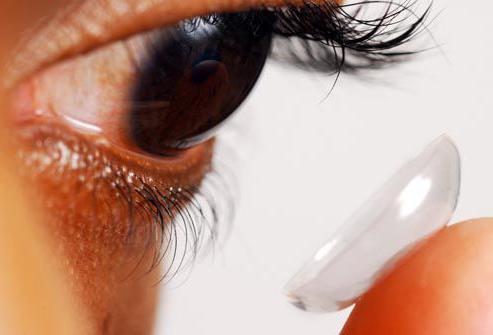
Consequences of wearing lenses at night
Risk of occurrence infectious diseases When wearing lenses at night, it increases, so you should give your eyes a rest from them. If you use special ones, then such consequences arise much less frequently, but these devices are much more expensive and do not always justify themselves. It should be remembered that any lenses must be properly cared for and changed periodically.
Of course, it is not recommended to sleep in regular lenses that are not intended for nighttime use. Due to the release of proteins and lipids, plaque can form on their inner surface, which can damage the cornea.
Conclusion
Most severe consequences Long-term wearing of contact lenses occurs due to untimely visits to an ophthalmologist.
Therefore, in order to protect yourself from such unpleasant complications, you need to properly care for your lenses and not wear them for too long. And if any of the above symptoms occur, you should immediately contact a specialist who can find out the cause and prescribe a course of treatment. Be healthy!
*5% is the maximum concentration of dexpanthenol among ophthalmic forms in the Russian Federation. According to the State Register medicines, State medical products and organizations ( individual entrepreneurs), engaged in the production and manufacture of medical devices, as well as according to data from open sources of manufacturers (official websites, publications), April 2017
There are contraindications. You need to read the instructions or consult a specialist.












